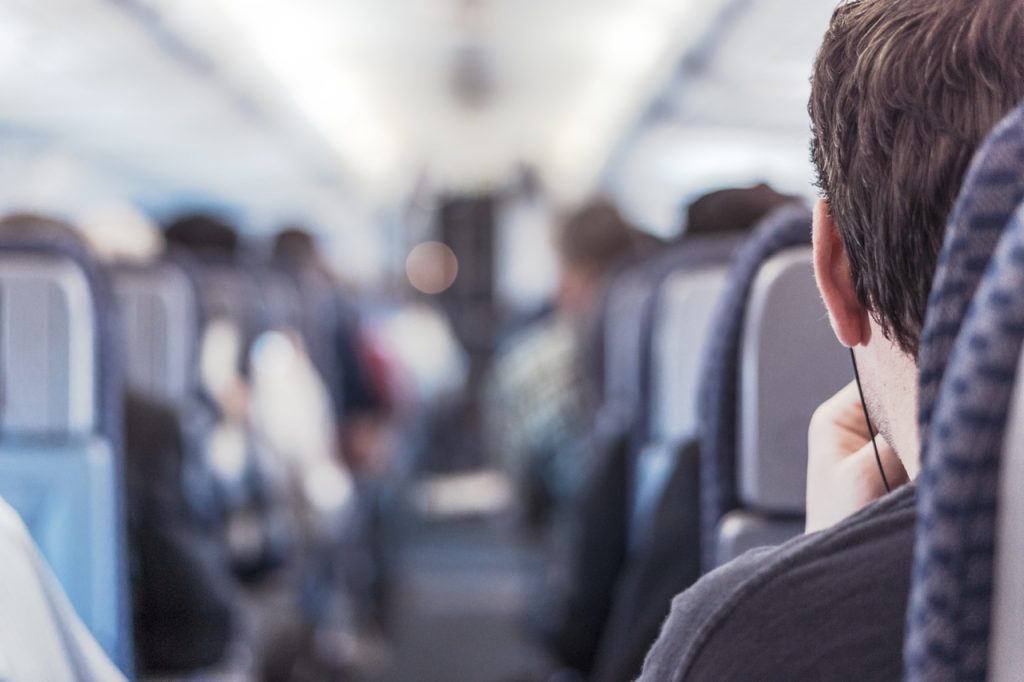So you’re a backpacker or budget traveller and you’re ready to get started with points? Fantastic!
Let me assure you that you’re in the right place. With the info here, you can easily score enough points to more than cover your flights, and it’s not even hard.
Point Hacks Backpacker Series
- Part I: Earning and using points effectively as a backpacker: why budget travellers should understand points
- Part II: Backpacking on points: Martina’s Latin America case study
- Part III: Practical tips for earning and using points as a backpacker
The most important thing to do in order to make this work for you is research. Make sure you spend time reading and learning about your options.
Remember, you’re the only one who can make the call if a particular deal is one that’s going to work for you. But I wanted to share a few budget-focused tips to get you started.
Choosing a credit card
Getting to know the card options available to you is essential for anyone interested in maximising their points earn, and this is just as true for a backpacker. But some people wrongly assume that if they can’t qualify for a top-tier card they should just give up.
There are actually a really wide variety of cards on offer, and bonuses, annual fees and minimum income thresholds vary throughout the year. The key is not to apply for anything and everything, but to get to know the market and carefully choose the product that’s going to let you meet your goals.
Most cards do require you to have a certain minimum income, but even for top-tier cards, that threshold is worth checking as you might still qualify. There are also plenty of mid and lower-tier cards that still offer enough points to get you in the air.
It might gall you to apply for a card offering 50,000 points when the same bank offers 75,000 points for cards on offer to higher income earners but 50,000 points is nothing to sneeze at. It’ll get you across the Pacific or up to Asia with points to spare.
One program or several?
There’s a bit of debate over whether it’s better to have a single frequent flyer program that you’re loyal to, or whether it’s better to join several programs and collect as many points as possible across different accounts.
The advantage of sticking to one airline is the ability to build your stash higher. There are plenty of people who say that it’s much better to have 200,000 points in a single account rather than 100,000 points in two different accounts, simply because points are generally not transferable between airlines. You usually can’t transfer an extra 10,000 points from one airline’s program to the other to make up enough points for a flight redemption.
However, I think that this thinking does world travellers a disservice. Each airline has different routes and different partner airlines, which means different destinations. As a globe-trotting backpacker, having options for as many airlines as possible makes a big difference, so as long as you can earn enough points on each airline to make a redemption possible, I say that for backpackers it makes sense to have multiple accounts.
Remember, the aim of this game for backpackers is not to get the highest number of points possible, but simply to get exactly where you want to go for as little cash as possible.
Making the minimum spend
One of the trickiest parts for backpackers getting started on point hacking is making the minimum spend that unlocks the sign-up bonus on a new credit card.
For a family of four, regular spending for a month or two should be enough to reach the minimum spend requirement. But for a young single person, spending $2000 within two or three months can be a little daunting. After all, the idea is to save money for your trip, right?
With a little creativity, you can get there. Because the spending doesn’t all have to be yours, it just has to happen on your card.
Got a close friend or family member with a big purchase coming up? Ask them if they’d mind popping it on your card and paying you back. With this tactic, you might even make the minimum spend in one go. Only try this with people you really do trust! You do not want to be chasing a friend or family member to pay you back thousands!
You can also get your friends to help when you’re out for drinks or dinner, or just ordering pizza. You know how there’s always that one person who doesn’t have cash, and asks everyone else to give them cash or transfer them money so they can put the total on their card? Be that person!
Hand over your card, and collect the cash from everyone else who’s putting in. You don’t even have to tell them why, and you’ll get an extra $100 or $200 towards your minimum spend, easy as anything.
It doesn’t just have to be with groups, either. Any time you’re shopping with a friend and they go to pay with cash, ask them if it can go on your card. It doesn’t matter if it’s groceries, fuel, clothes, drinks or whatever. It’s usually no big deal. Just ask – and make sure they pay you back.
Another option is to simply change your spending habits. We’re lucky in Australia that more and more places are moving to electronic payment and doing away with minimum transactions.
Getting a coffee on your way to work? Use the credit card. Ducking out to buy milk? Use the credit card. Don’t save it for big spends, because the little spends all add up. Challenge yourself to see how long you can go between ATM withdrawals. Try to be someone who only uses cash when they have to.
Using these strategies, the minimum spend requirement is easier to meet than you think.
Maximising the value of your points
Speaking generally, earning points is only one side of the coin. You have to be clever about using them too.
Understanding how airlines calculate the points needed to fly a particular route unlocks an extra benefit for anyone who doesn’t live near a major airport.
Let’s use Qantas as the example, because they publish their points tables and a neat points redemption calculator on their website. Keep in mind you can do this same thing with Virgin or basically any other airline – it’s only the exact numbers that will vary.
Rather than ascribing a particular dollar or kilometre value to using a point, airlines put flights into distance bands and price them in points based on distance. So for example, a Qantas flight between 7001 miles and 8400 miles long will cost you 45,000 points to redeem. It doesn’t matter whether it’s 7143 miles or 8234 miles – anything in that band costs 45,000 points.
This is plenty to get you from Sydney to say Santiago, Chile, which is 7063 miles, and you’re left with over 1300 miles to spare within that redemption band. And it’s these spare miles that can be particularly handy when it comes to maximising kilometre value from your points.
Not everyone lives in Sydney, obviously. If you’re from Adelaide and want to head to Santiago, you’ll probably need to fly via Sydney. If you book that ticket separately, the 725 miles from Adelaide to Sydney would set you back another 12,000 points.
But if you book your Adelaide – Sydney – Santiago trip as a single award ticket, Qantas will treat it as a single 7788-mile journey, charged at just 45,000 points. That’s the same as it would charge for the Sydney – Santiago ticket alone because the two journeys fall into the same redemption band. It means you can essentially travel from Adelaide to Sydney for free. Pretty sweet, right?
You won’t be able to squeeze in a long stopover in Sydney, although you might be able to squeeze in a layover of less than 24 hours if you can make the flight times line up. But that’s not really the point. The fact is, there’s not much in the way of international destinations out of Adelaide, or most of Australia’s airports. Most people flying internationally need to get themselves to a major airport first.
Valuing your points by the kilometre and squeezing every bit of value out of them helps you get exactly where you want to go without spending extra to get there – and that’s the point of point hacking for backpackers.
Why you should use Points + Pay when paying for flights
At checkout, both Qantas and Virgin give you the option to pay for your full fare on points, or to pay a portion of the fare (the taxes and fees) with cash, in exchange for a discount on the number of points you spend. This is known as Points + Pay.
When you’re trying to get the maximum number of kilometres possible from your points, you should definitely opt to pay the fees with cash. (Well, with your credit card, obviously.)
Why? Because trading off points for cash when paying for flights is usually really bad value, regardless of whether you are booking Economy, Business or First Class. And because for us budgeters, points are generally a scarce resource. Wasting them on taxes and fees when you could be getting more bang for buck out of them by using them for flights just doesn’t make too much sense.
Imagine you saved 8000 points on your last booking by paying the fees and taxes outright instead of using Points + Pay. That’s easily enough points for an extra flight, or to get you into a higher point redemption band so you can fly further. Ultimately, for those of us travelling in Economy Class, that’s what matters most.
Read the fine print
The true way to make this system work for you is to really read and understand the fine print on every offer and potential bonus deal that comes through.
Don’t only read the marketing copy – and don’t allow it to dissuade you either! As we’ve talked about, most of the marketing in this space is squarely aimed at people with money to spare. Words like Platinum, Prestige, Executive and High Flyer are all part of the marketing vocab, and they can be alienating and off-putting to backpackers because we’re not part of that crowd. But don’t worry about the copy – skip that and check the details instead.
The fine print can reveal that an ‘exclusive’ program might not be that exclusive at all, or that a ‘prestigious’ offer is actually open to everyone.
A dining program to score you extra points might seem like something you can’t access – or your favourite burger place might be on the list alongside the fancy places. A hotel voucher might come with a list of suggested hotels that are out of your price range, but it might be perfectly okay to spend it on a hostel too.
When you get sent a new deal or a brochure, don’t let the marketing material fool you into hitting delete or chucking it in the bin. Your idea of a ‘luxurious’ lifestyle might differ from the people in the stock photos, but check the fine print – you might still be able to make this work for you.
Understanding how these programs work is the key to making the most of them. Each program and offer differs a bit, so you do need to take the time to understand what’s going on (and keeping up with Point Hacks is a great way to do that too!).
Summing up
I hope this series has given you some practical ideas for how backpackers and budgeters can get started point hacking and squeeze the maximum value from points. It’s all about understanding that these programs apply to you, that you can use them, and remembering to value your points in kilometres.
If you’ve got any ideas you want to share or questions you want to ask, drop me a line in the comments below. I’d love to hear your thoughts!
Other case studies
- Read how Warren earned and used points for Business Class during their honeymoon
- Read how Matt booked a trip around The Pacific for 200,000 points
- Learn how Bevan hit Europe, Japan and Hong Kong using 280,000 Qantas Points






And a great tip about paying your mother’s bills using your Qantas points earning card!
My wife Rosie and I are fully ‘hacked’ up (LHR to SIN in Singapore First suites as a part of our 25th wedding anniversary next May), but you’ve alluded to a really important principle, i.e. read the small print.
Because Rosie does full-time unpaid work (aka raising 3 littlies), her taxable income is low (<$15k).
I thought there was no way we could get her onto any of the juicy credit card offers….
In desperate need of getting 6000 more KrisFlyer miles into her account for the first class sector, we were able, much to my delight, to get her the Amex platinum edge card. $2000 spent at Woolies and we had the points in her account.
Then even better (long story but we both have U.S. social security numbers) we needed some more AA miles and they let Rosie get one of their Aadvantage credit cards (albeit with a $1500 limit) which gave us 60000 AA miles with no annual fee, meaning we’ll now be doing JFK-LHR in first instead of business. Woohoo!
Currently 30, and have only been aware of ‘point hacking’ for the last 3 months – have been collecting Qantas points for the last 18 months however. Over the last 10 years I have flown with Qantas, Air NZ, Singapore, Air Pacific (Fiji airways), Thai, Vietnam, Malaysia, JAL, Virgin Australia, Jetstar, Cathay, Lufthansa, and Emirates, many multiple times! I have never had a frequent flyer account with any bar Qantas. If only I had signed up to some of the major free FF programs, I would have had some points in each rather then none!
They all add up!
Wife and I have got a return trip to USA August 2017 in J thanks to points!! That may have been an around the world trip if we had of been collecting all we could in our twenties.
So exciting to hear you’re off to the States next year!! You’re going to have an amazing time!!
Martina 🙂